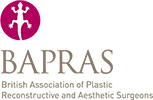Condition — skin
Moles
Moles are one of the most common skin complaints, and can affect anyone at any age. Most moles are harmless. They are caused by a cluster of pigmented cells and present in a variety of shapes, colours and sizes and can be flat or raised depending on the type of mole. The two main types of moles are common moles and dysplastic naevus, with slightly differing features.
Common moles will typically be round or oval with a smooth border and distinct edge separating it from the rest of the skin. They usually start out as a flat or raised spot that can develop into a bump, but the texture should be smooth. The common mole can vary in colour from skin coloured, to pink, brown or on darker skin, black. However the colour will normally be consistent across the mole. The size of a common mole is expected to be less than 5mm wide.
A dysplastic nevus is often larger in size than a common mole, with colour that can be inconsistent throughout; usually tans, browns or pinks. From the perspective of shape, the dysplastic nevus can be irregularly shaped with jagged or uneven edges. The texture can be scaly, rough, smooth or pebbly.
Most moles are not cancerous. However, if you are concerned about a mole then you should have it checked as soon as possible just to be safe. There are some checks you can do yourself at home which will help you identify changes in a mole that should be checked by a doctor. These are: changes in the colour of a mole, if the mole changes in size and becomes uneven, if the mole changes in shape, texture, or height, if the skin on the surface changes and becomes dry, crusty or scaly, if the mole hardens or feels lumpy, if the mole becomes itchy or if the mole bleeds or oozes.
Many people choose to have moles removed for cosmetic reasons, or because they are irritated by wearing clothing or jewellery. Here at Reshape & Restore, our team of experts can help. To find out more about mole removal, please contact us and we will be happy to discuss your concerns.






